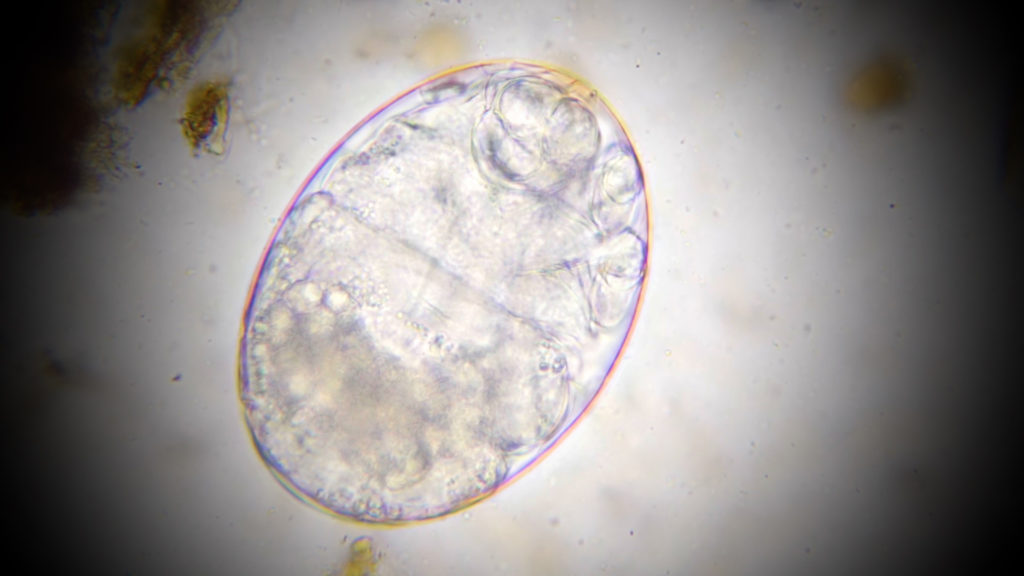
SOILINGO
What does words enable us to craft, think, and articulate?
To experiment with concepts is a way to find common grounding across disciplines and practices, and to navigate difficult terrains. Especially at the intersection of critical and creative practices. Iris van der Tuin and Nanna Verhoeff suggest in their book Critical Concepts for the Creative Humanities (2022) – a dictionary of sorts – that “concepts for the creative humanities are reflexive of the contemporary moment yet future oriented in thinking with and toward possibilities for emergence, change, and transformation”. Such critical concept creations neither offer fixed labels, nor exhaustive definitions. Instead the concepts are generative, and actualized in situated practices. Decolonial attempts, instigated by Indigenous knowledge keepers and scholars to untie or cut open the knots of dominant and repressive Eurocentric knowledge structures and regimes, challenge scholars to use language with care so as to inscribe, address, and include previously excluded or ignored knowledge practices and ontologies. Such new humanities are practiced under many different names depending on focus and genealogy, e.g. environmental humanities, posthumanities, blue humanities – and yes, an emerging soil humanities – that seek to diversify and un-discipline in the name of responsive and responsible collaboration. The collection and proposals below are in the making and on the move. Some are speculative, others reflexive, or tentative. What do they enable us to craft, think, and articulate?
Reference:
van der Tuin, Iris and Nanna Verhoeff (2022). Critical Concepts for the Creative Humanities. Rowman & Littlefield
A collection of gathered and invented concepts
Soils as naturecultural archives
Janna Holmstedt & Christina Fredengren,
the Humus economicus project group.
6 September, 2023.
Soil bodies constitute baffling naturecultural archives. Soil is a time capsule (Wilson 2014) that can be approached on the scale of landscapes, in the soil profile, and on a microscopic scale as soil samples in laboratories. From a geological perspective soil has been formed by glacial activity, testifying to deep time agentialities. In environmental archaeology, minuscule seeds, microfossils, burnt food, charcoal, traces of DNA and minerals in soil all bear witness to changes over long stretches of time and can tell of lost landscapes, human settlements, animal life, radioactive fallout, temperature shifts, and changes in climate. An agricultural perspective tells of degradation or
regeneration of topsoils formed by different forms of cultivation and composting techniques. A biological lens reveals the liveliness and symbiotic nature of soil as a living superorganism. Cultural perspectives show soil used in painting, pottery, building material, skin protection, medicine, burial, food culture, as waste deposit, and so forth. Soil’s dual inheritance as both naturally and culturally produced, result in diverse and highly localized soil ecosystems, as well as cultural soilscapes (Wells & Antonucci 2019) with specific flora and fauna of which humans are a part. This goes for urban and industrial soilscapes as well. Though we may approach soil on multiple scales and from various perspectives, they do not fit neatly into a disciplinary nature-culture divide. Such a separation pushes the naturecultural intertwinement out of view, together with relational and processual aspects. Rather, soils are ‘naturecultures’ (Haraway 2008: 15) providing a range of capacities that emerge from biogeochemical cycles and multispecies interdependencies. Atoms and genes travel. The seeds of a plant store the memory of the local environment in their DNA, mobilizing resilience through repetition, variation and diversity. Heirloom seeds too constitute baffling naturecultural archives.
While soils, as well as seeds, today readily are considered a resource and factor of production, a matter for the natural sciences to observe and for agriculture and technosciences to manage, human societies have for millennia been deeply embedded in soils. Every aspect of human life has been formed by what soils can gift and provide, long before agriculture and plant cultivation were practiced. Even the Latin word homō, denoting a human being, is related to humus, meaning “ground”, “earth”, “soil”. From soils we create dwellings, pigments, even antibiotics. We bury our dead in soil, and people learn about decay, decomposition, diversity, and transformational life processes through carefully noticing soils, plants, insects, animals and their mutual adaptation. In these ways, humans have throughout history and prehistory been part of soil cultures where utility is not separated from spirituality and community, and nature is not separated from culture. The naturecultural archive let us get a glimpse of an overwhelming abundance that is not possible to discipline. This calls for transdisciplinary and situated approaches to local soils as part of multispecies communities and histories, if we are to imagine and articulate more sustainable futures.
Reference:
Haraway, Donna (2008). When Species Meet. Minnesota: University of Minnesota Press.
Wells, Christian and Marlena Antonucci (2019). Reframing Heritage: Cultural Soilscapes and Soil Memory. In Field to Palette. Dialogues on Soil and Art in the Anthropocene. Eds. A. Toland, J. Stratton Noller, G. Wessolek. CRC Press.
Wilson C (2014) An Introduction to Cultural Soil Heritage. [YouTube video]. Accessed December 2021.
Humus economicus
Janna Holmstedt,
the Humus economicus project group.
1 November, 2023.
As Raymond Williams (1976) reminds us, the very concept of culture originates from the handling of soil and agricultural practices. And ‘home’ or oikos in Ancient Greek, stands as metaphor and etymological root to both economy and ecology, though today they have become incommensurable sciences. Humus economicus, a speculative and creative concept proposed as an entry in the book More Posthuman Glossary (Holmstedt 2022), is simultaneously a proposal, an invitation, a tool, and a practice. Humus economicus proposes that neither Homo economicus – commonly described as rational Man behaving in his own self-interest, maximizing profit while avoiding
unnecessary work – nor finance are at the heart of economy. Living soils are. This suggests that we turn to soil for advice on economic and organisational behavior where gifting as excess, as opposed to a closed economy of exchange (Hird 2007), is played out in unfathomable complexity. Humus economicus therefore offers itself as a reframing tool that reclaims economy as an ethical, relational and intragenerational (Fredengren and Åsberg 2020) material-discursive practice, which in turn reembeds societies in soils and lands (Krzywoszynska and Marchesi 2020). It invites us to call forth embodied knowledge of, and empathy with, an environment that is largely invisible, difficult to grasp, un-charismatic to many, and which is being altered in anthropogenic ways. It is an invitation to sense and make sense of soils otherwise, to listen to and think as part of the soil as gut, a metabolic conduit between life and death. Lastly, Humus economicus as practice cultivates modes of becoming with soils, of weaving soil-centered and situated practices, knowledges, spheres, and publics together into a multitude of different regenerative place-based patterns, capable of regulating and facilitating exchanges for mutual benefit. This practicing of gut-logics and hyperdiversity makes, and demands, time for care (Bellacasa 2015).
Reference:
Bellacasa, Maria Puig de la (2015). ‘Making time for soil: Technoscientific futurity and the pace of care.’Social Studies of Science, 45(5): 691–716.
Fredengren, Christina and Cecilia Åsberg (2020). ‘Checking in with Deep Time,’ in R. Harrison and C. Sterling (eds), Deterritorializing the Future: Heritage in, of and after the Anthropocene. London: Open Humanities Press.
Hird, Myra, J. (2007). ‘The Corporeal Generosity of Maternity.’ Body & Society, 13(1): 1–20.
Holmstedt, Janna (2022). Humus economicus. In More Posthuman Glossary. Eds. R. Braidotti, E. Jones, G. Klumbytė. London: Bloomsbury Academic.
Krzywoszynska, Anna and Greta Marchesi (2020), ‘Toward a Relational Materiality of Soils: Introduction,’Environmental Humanities, 12(1): 190–204.
Williams, Raymond (1976). Keywords: A Vocabulary of Culture and Society. London: Fontana.
Agrarian posthumanities
Sophie von Redecker
2022
Sophie von Redecker offers Agrarian (post-)humanities as “an idea, a concept, a field of study and a way of thinking of the land with, across and beyond disciplines” (Redecker 2022: 8) that connect the Agricultural Sciences with Critical Agrarian Studies and Peasant Studies, while at the same time resisting the traditional “division of labour where ‘nature’ is left to the science and ‘culture’ to the humanities (Åsberg and Braidotti 2018: 2).” The interdisciplinary turn and attention towards complex assemblages offered by posthumanities asks us to reconsider epistemological, ontological and ethical assumptions and foundations that both the sciences and humanities rest upon, and engage responsibly with their
economic and colonial roots. Redecker argues that (Western) Agricultural Sciences tend to render invisible other soil knowledges and soil cultures through dominant practices that are rooted in monoculture histories and plantation logics. This also points to the need of diversifying and decolonizing not only Agricultural Sciences but also institutionalized agricultural education. Agrarian post-humanities roots and attunes through the material practice of farming and seeks to “shed light on what farming practices are able to teach us about the complex issue of thinking with nature” (Redecker 2022: 9).
Reference:
Redecker, Sophie von (2022). Agrarian (post-)humanities. In More Posthuman Glossary. Eds. R. Braidotti, E. Jones, G. Klumbytė. London: Bloomsbury Academic.
Åsberg, C. and B. Braidotti, eds. (2018). A Feminist Companion to the Posthumanities. Cham: Springer.
Upcoming
Cultivating ecosystem conviviality
Impossible archives
Soil oblivion and remembrance
Ecopunk
Compost-o-scene
Regenerative heritage
Soilful

